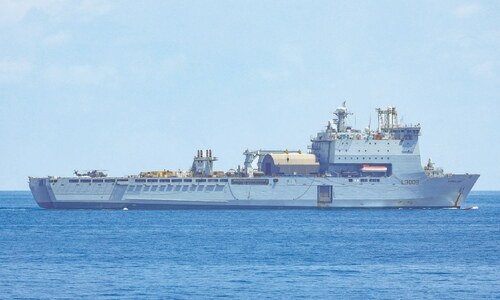On July 6, the Norwegian government convened the Oslo Summit on Education for Development, building on the outcomes of the ambitious agenda set by world education ministers earlier this year at the World Education Forum in Incheon, Korea.
Pakistani Nobel Peace Prize laureate, Malala Yousafzai, attended the summit and in an address to prime ministers and government officials, reminded them that they were still choosing to prioritise spending on weapons, war and conflict, rather than global education. A recent publication from her own charitable fund suggests that the collective amount world governments spend on their military in eight days, an estimated $39 billion, is what is needed to fund 12 years of free, quality education for every child on the planet. “I want world leaders to choose books over bullets,” Yousafzai told attendees. “If the world leaders decide to take one week and a day off from war and weapons, we can put every child in school. Books are a better investment in our future than bullets,” she said.
A case study prepared for the summit, titled Financing Education in Pakistan: Opportunities for Action, finds Pakistan languishing near the bottom of the world’s worst performing countries in education. Its abysmal education indicators illustrate its inability to keep pace with the progress of other countries in this vitally important sector.
Pakistan’s dire security challenges have a detrimental impact on education.
In 2012, 5.4 million children were out of school in the country, second in the world behind only Nigeria. The report finds that factors such as state insecurity, poverty and cultural conservatism, in conjunction with limited access to quality teaching, are the key bottlenecks to education. These have a pernicious effect on education for all children, but especially for those from disadvantaged backgrounds, and girls in particular. For many, the disadvantages go into effect from birth itself, with poverty, location, gender and disability negatively affecting the chance of ever entering school.
Pakistan’s dire security challenges have a detrimental impact not only on state security but also on state education. The semi-autonomous tribal regions that border Afghanistan have for years been a hideout for militant groups of all kinds. From Al Qaeda to the Tehreek-i-Taliban Pakistan, as well as foreign fighters such as Uzbeks and Uighurs, and according to latest reports, even fighters from the self-styled Islamic State.
The siege of an army school by the Pakistani Taliban in December 2014, which killed around 140 children, is another instance — if the most horrific — of the mass targeting of children, teachers and schools by militants. There have reportedly been at least 838 attacks on schools in Pakistan between 2009 and 2012, more than any other country during this period, leaving hundreds of thousands of children out of school and deprived of education.
However, to give credit where credit is due, Pakistan has shown some progress over the Millennium Development Goal period. Over 20pc more children were enrolled in primary school in 2012 than in 1999. Furthermore, the gender gap in enrolment has narrowed, with girls’ enrolment increasing on average from 39pc in 1999 to 44pc in 2012 as a proportion of the total. In 2010, the Constitution was amended to include the right to free and compulsory education provided by the state for all children aged 5-16 years, a compelling gesture toward state support for education. The challenge lies in translating intention into reality. If Pakistan is committed to the cause, it needs to put its money where its legislation is.
Given current spending patterns, Pakistan faces enormous financing challenges to meet its ambitious post-2015 target of providing every child with 12 years of quality education by 2030. The government’s resource allocations as a proportion of GDP are far below the state target of 4pc. In recent years, the allocation has been no more than 2.5pc, and only reached 2pc of GDP in 2013-2014. Pakistan will need to increase expenditure per pupil by 10 times its current expenditure at the pre-primary level, by six times at the primary level, and by four times at the secondary level to meet its post-2015 target.
The report provides five key recommendations to address the state’s financial challenges; these include tax reform and strengthening the coordination of resources amongst provinces.
What may not come as easily is the fight for state security and the required changes in societal attitudes towards education, especially girls’ education. As the international community comes together to renew its political commitment to reach the 58 million children worldwide who are out of school, the reality for the state of Pakistan is that until it is able to grapple with its security situation to ensure that every child can enter and exit a school safely, it will continue to spend on bullets — as well as books.
The writer is a senior strategy consultant and an advocate for gender equality.
Published in Dawn, July 27th, 2015
On a mobile phone? Get the Dawn Mobile App: Apple Store | Google Play











































